Nudging the emerald Escambray mountains, Trinidad is a UNESCO World Heritage Site and one of Cuba’s most charming towns. So perfectly preserved are the quaint colonial buildings, the entire town feels as though it’s trapped in a time warp from the 18th century. Stroll the winding cobbled streets here to discover a trove of architectural treasures, from colorful colonial mansions to historic churches and pastel-painted bell towers with panoramic views. Most of the buildings span the 17th to 19th centuries when the town prospered from the sugar and slave trades.
Trinidad is also a great base for day trips to the mountains and the sea. From here, sightseers can hike to waterfalls in the Sierra del Escambray; bike to the pretty Playa Ancon, a palapa-studded beach; or venture into the Valle de Los Ingenios, yet another World Heritage-listed gem.
??1. Plaza Mayor
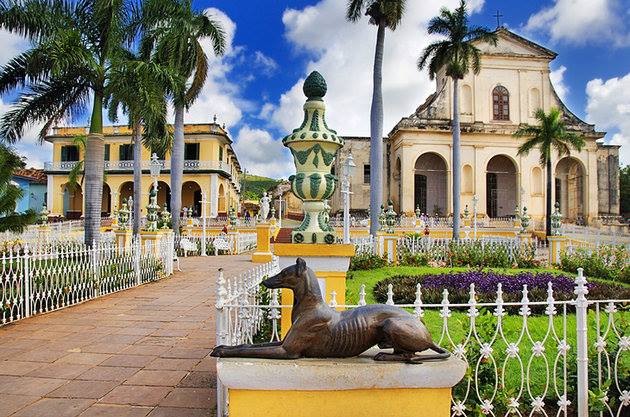
May 5, 2008
Top Sights in Trinidad
by Carlos Rodriguez • Location Spotlight, Travelers
Nudging the emerald Escambray mountains, Trinidad is a UNESCO World Heritage Site and one of Cuba’s most charming towns. So perfectly preserved are the quaint colonial buildings, the entire town feels as though it’s trapped in a time warp from the 18th century. Stroll the winding cobbled streets here to discover a trove of architectural treasures, from colorful colonial mansions to historic churches and pastel-painted bell towers with panoramic views. Most of the buildings span the 17th to 19th centuries when the town prospered from the sugar and slave trades.
Trinidad is also a great base for day trips to the mountains and the sea. From here, sightseers can hike to waterfalls in the Sierra del Escambray; bike to the pretty Playa Ancon, a palapa-studded beach; or venture into the Valle de Los Ingenios, yet another World Heritage-listed gem.
??1. Plaza Mayor

The picturesque Plaza Mayor lies in the historical center of Trinidad and is an ideal place to start a sightseeing tour of the city. Many of Trinidad’s top tourist attractions lie on or near the Plaza Mayor, including the fascinating Museo Historico Municipal, the famous Iglesia Parroquial de la??Sant??sima??Trinidad, and other museums and architectural gems. After exploring the pretty colonial mansions and museums that preside over this palm-studded square, visitors can relax at one of the nearby restaurants or alfresco caf??s. It’s an evocative spot to pull up a seat, order a cool drink, and imagine what life must have been like here when wealthy sugar barons sauntered along the cobbled streets.
??2. Palacio Cantero (Museo Hist??rico Municipal)

The Museo Historico Municipal in Trinidad is housed in the beautiful neoclassical Palacio Cantero. Built in the early 1800s, the mansion has an air of grandeur throughout with Italian marble floors and large open rooms. The museum explores the history of Trinidad and the surrounding areas. On display are documents and maps, as well as exhibits on the World Heritage-listed Valle de los Ingenios, the industry of slave trading, and the wars of independence. After browsing the exhibits, visitors should ascend the steep spiral stairs of the tower for a panoramic view of the city and Caribbean Sea. It’s particularly beautiful at sunset.
Address: Simon Bolivar 423
3. Iglesia Parroquial de la Sant??sima Trinidad
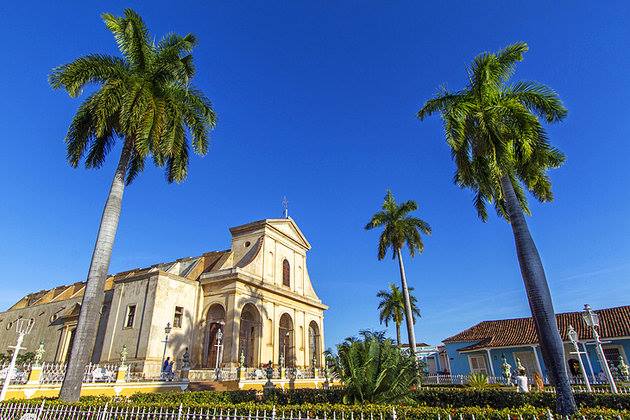
On the upper end of the Plaza Mayor, the Iglesia Parroquial de la Santisima Trinidad wears a simple sun-bleached Neoclassical fa??ade, which belies its interior treasures. This is the largest church in Cuba??and houses a much-worshipped statue known as Christ of the True Cross orSenor de la Vera Cruz. This 18th-century wooden statue was bound for a church in Vera Cruz,??Mexico??from its place of origin in Spain. But strong winds thwarted the ship’s arrival at its destination and the ship landed in Casilda instead, just a short distance from Trinidad. The captain decided to leave the statue behind when he set sail, and the Senor de la Vera Cruz was brought here where it still graces the church today. Interior highlights of the church are the vaulted ceilings and a series of impressive altars carved from cedar and mahogany. Iglesia Parroquial de la Santisima Trinidad is also renowned for its fine acoustics.
4. Playa Anc??n
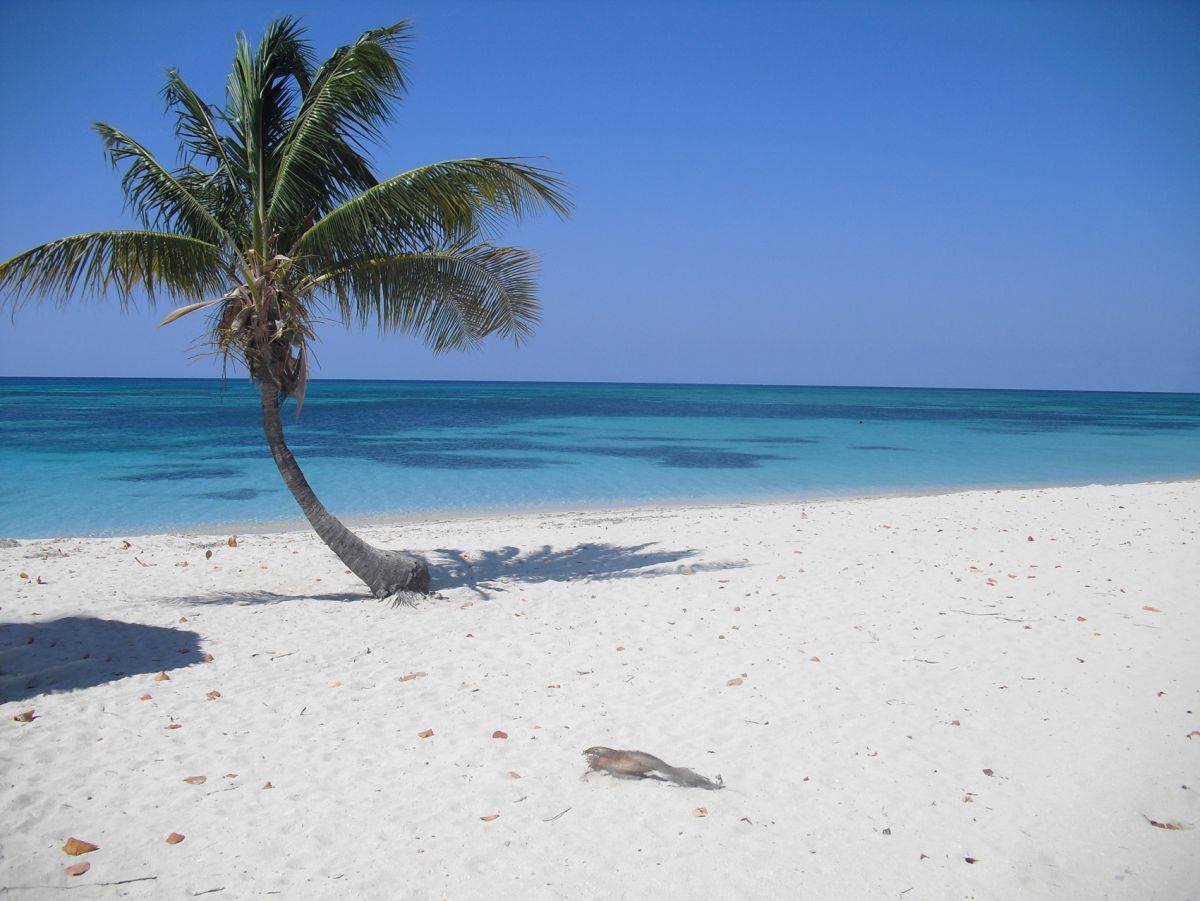
About 12 kilometers south of Trinidad, Playa Ancon, on the Peninsula Ancon, is one of the prettiest beaches on the south coast of Cuba. A coral reef bristles just offshore, and the 4-kilometer stretch of white sand fringes crystal clear seas in dreamy shades of blue. Though not quite as striking as Varadero, Guardalavaca, and Cayo Coco, Playa Ancon tends to be less crowded than these famous strands and offers a broader range of accommodations – from all-inclusive hotels to guest houses. Those on a budget can opt for a home stay at La Boca, another beach area near the top of the peninsula, which offers much more interaction with the locals than some of Cuba’s other beach resorts. For a fun day out, many sightseers rent bikes in Trinidad and cycle to Playa Ancon; the trip takes about 40 minutes.
A short boat ride from Playa Ancon, Cayo Blanco is popular for day trips. In addition to basking on the island’s white sand beaches, visitors can dive and snorkel the largest black coral reef in Cuba.
??5??. Palacio Brunet (Museo Rom??ntico)
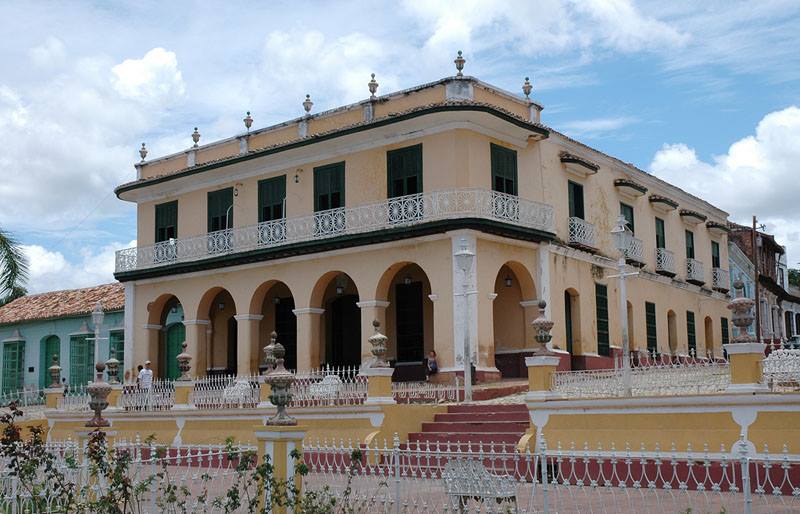
The yellow-hued Palacio Brunet houses the Museo Romantico, which offers a window into the world of wealthy sugar baron, Conde de Brunet. Built in the early 19th century, this attractive colonial mansion was owned by Brunet, from 1830 to 1860, an era referred to as the Romantic period. The museum’s collection comprises items from several wealthy Trinidad families, but primarily the Brunet’s possessions. Among the displays are exquisite glass and porcelain pieces, artwork, and antique furniture from the period.
Address: Echerri 52, Trinidad
6. Museum of Colonial Architecture
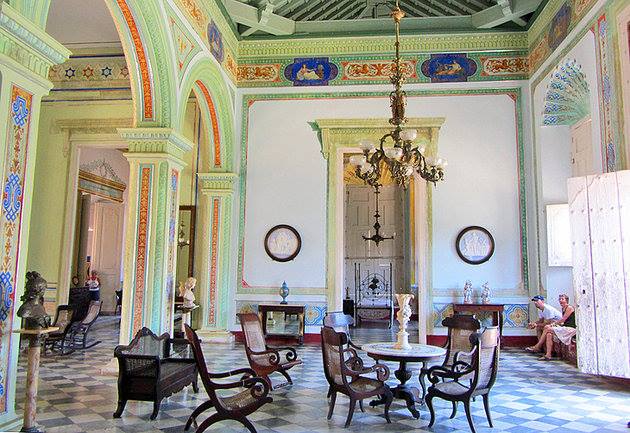
For visitors who would like to learn more about the intricacies of Trinidad’s colonial architecture, the Museo de Arquitectura Colonial delves into the details. The Sanchez Iznaga mansion houses the museum and consists of two blue 18th-century buildings that were combined in the early 19th century. Within its interior are displays of architectural trimming such as doors, handles, locks, windows, and grills as well as a recreated 19th-century bathroom. The Museo de Arquitectura Colonial also offers guided walking tours through the historic streets of Trinidad, giving visitors a richer appreciation of the town’s magnificent buildings.
Address: Plaza Mayor, Trinidad
7. Iglesia y Convento de San Francisco (Museo Nacional de Lucha Contra Bandidos)
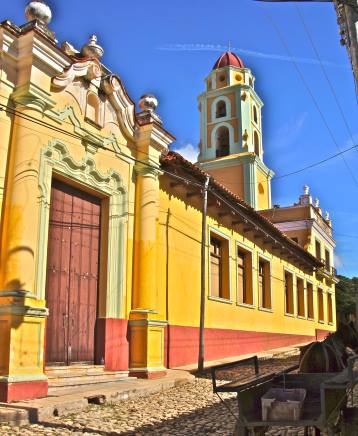
A distinctive landmark in Trinidad, the Iglesia y Convento de San Francisco with its pretty yellow and green bell tower claims an eventful history. Built in 1813 by the Franciscans, this former convent was taken over and turned into a parish church in the mid 1800s and later became a jail before much of the structure was torn down in the 1920s. Only some of the outer buildings and the bell tower still stand.
Today, this picturesque building accommodates the Museo Nacional de Lucha Contra Bandidos (National Museum of the Struggle against Bandits). Fans of Cuba’s revolutionary history should devote some time to explore the intriguing exhibits here. On display are photographs, documents, and equipment associated with the counter revolutionary forces or ‘bandits’ of 1959 and the problems and battles that ensued. After browsing the museum, sightseers can lighten the mood atop the bell tower, which affords beautiful views over the city.
Address: Echerri 59
8. Casa de Aldeman Ortiz (Galer??a de Arte)
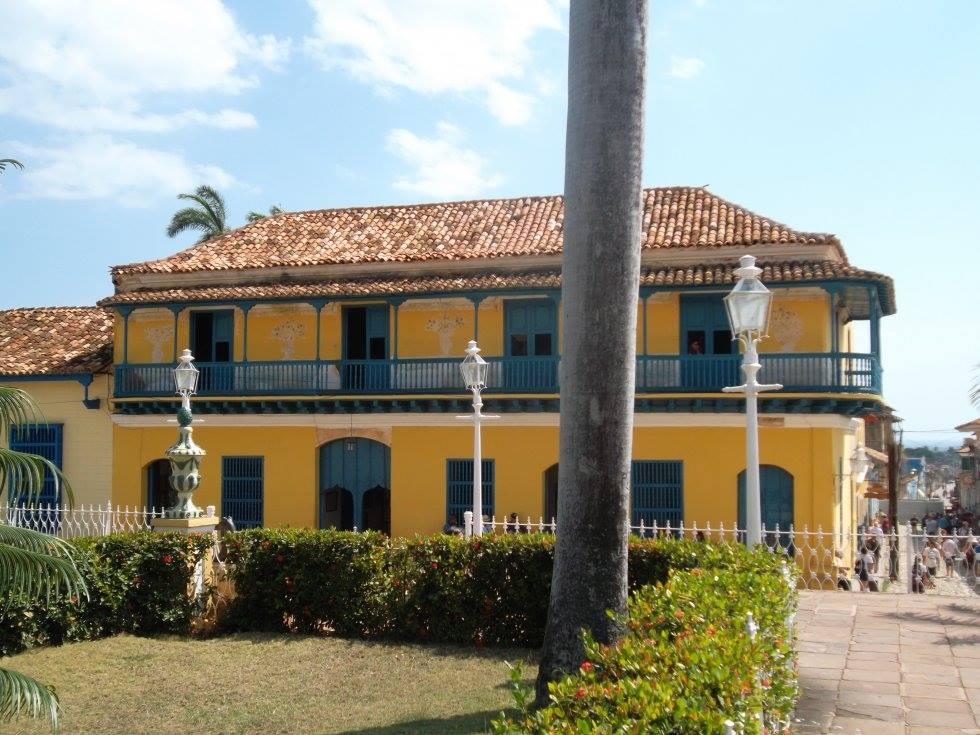
The Casa de Aldeman Ortiz is a colonial mansion from 1809 that was originally built for Ortiz de Zuniga, a slave trader and mayor of Trinidad. The building now houses the Galeria de Arte, which contains an art school and offers paintings for sale to the public. Contemporary Cuban art dominates the collection. As well as viewing some of these vibrant pieces, a visit here is a good excuse to see the inside of the Casa de Aldeman. Note the frescoes and ornate ceilings, as well as the grand staircase.
9. Valle de los Ingenios
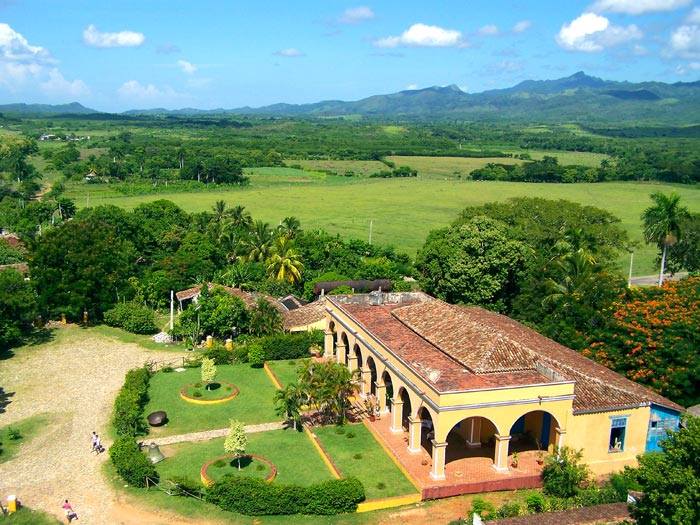
East of Trinidad, on the road to Sancti Spiritus, lies the lush Valle de los Ingenios with gorgeous scenery of green sugar cane fields, palms trees, and mountains. Listed as a UNESCO World Heritage Site, the valley, also known as Valle de San Luis, contains relics and monuments from the 19th century when slave-tended sugar cane plantations and mills flourished here.
Tours of the valley should include a number of key sights. The Mirador de La Loma del Puertos, an elevated lookout, offers impressive views of the entire Valle de los Ingenios. Also not to be missed is the 44-meter high Manaca Iznaga tower. Visitors can climb the tower for more views, and dine at the restaurant in the house next door. Another historic house turned restaurant is the Casa Guachinango, owned in the 18th century by Don Mariano Borrell, a well-known name in the history of the region. Here, visitors will find another beautiful view of the landscape, which also takes in the river, Rio Ay.
A tourist train runs through the valley from Trinidad, and sightseers can also explore the valley by car or horseback, with or without a guide.
??10. Salto del Caburn??
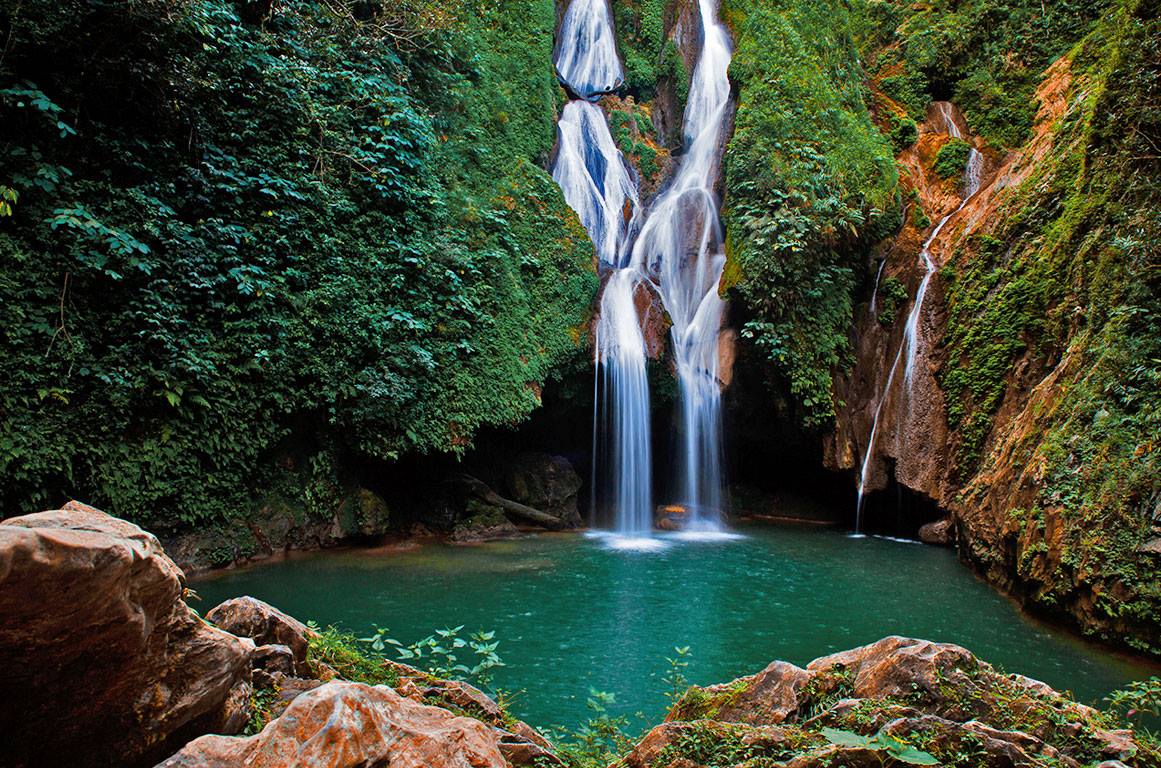
Surrounding Trinidad are the emerald peaks of the Sierra del Escambray with some rewarding hikes. Here, in the Topes de Collantes National Park, nature lovers can embark on a challenging trail to the 75-meter waterfall of Salto del Caburn??. The trail is about 5 to 6 kilometers round trip through a forest of palms and pine trees where hikers can spot hummingbirds, woodpeckers, insects, and beautiful tropical plants. Once at the falls, visitors can cool off in the crisp waters of the swimming hole. Hikers should wear appropriate shoes as the trail can be narrow and steep. Note that during the dry season, the falls are less impressive.
Other??interesting attractions are:
– La lglesia de la Sant??sima Trinidad
– La Casa de la Trova
– El Parque C??spedes
– La Bodeguita del Trinitario